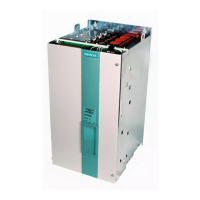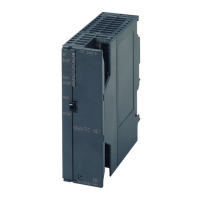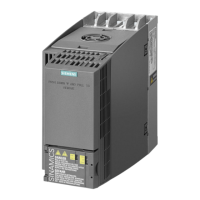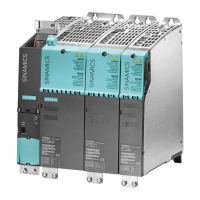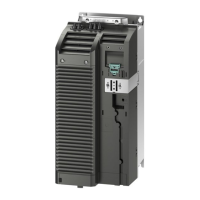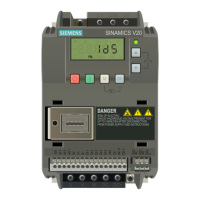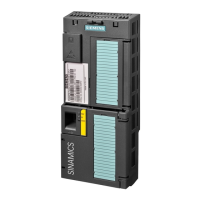Communication / SIMOLINK 12.2010
6SE7087-6QX70 (Version AM) Siemens AG
8.3-6 Compendium Motion Control SIMOVERT MASTERDRIVES
Each transceiver receives the telegrams (all of them) initiated by the
dispatcher and can upread their data contents (value of 32 bit per
telegram) or overwrite them with their own data, in accordance with a
determined rule. The received telegrams are passed on to the next
node in the ring, irrespective of whether the data contents have been
read, overwritten or revised. Nodes with a transceiver function cannot
maintain data traffic in the ring on their own.
8.3.3 Application with peer-to-peer functionality
The peer-to-peer functionality with SIMOLINK corresponds in principle
to the peer-to-peer link with which you may already be familiar from
MASTERDRIVES and SIMOREG, i.e. exchange of process data
between MASTERDRIVES MC/VC units with the following additional
advantages:
♦ Very fast (11 Mbit/s; one hundred and fify 32-bit data in 1 ms)
♦ Freely selectable, i.e. every MASTERDRIVES MC/VC can send
process data to every other MASTERDRIVES MC/VC, or receive
data from it.
♦ Maximum of sixteen 32-bit data per MASTERDRIVES MC/VC
possible via SIMOLINK; i.e. every MASTERDRIVES MC/VC can
receive up to 8 32-bit data via SIMOLINK, and send up to 8 32-bit
data to other MASTERDRIVES MC/VC units.
The telegram address is not interpreted as a "destination address"
(which determines to whom the information is to be sent), but is
understood to be a "source address". This indicates where the
information is coming from.
Dispatchers and transceivers write their information (= data) in the
telegrams assigned to them (node address = address in telegram) on
the bus. Dispatchers and transceivers can read every telegram on the
bus. For this purpose, the nodes have separate storage areas for
receive data and transmit data.
The dispatcher and transceiver nodes only transmit information (= write
data) in the telegrams which are assigned to them via the address. A
maximum of 8 x 32-bit data can be transferred in 8 telegrams (same
address and channel number from 0 to 7). A channel number is
assigned to each 32-bit value and thus clearly also a telegram on the
bus.
Transceiver
Principle
Basic principle of
addressing
Addressing
mechanism - writing

